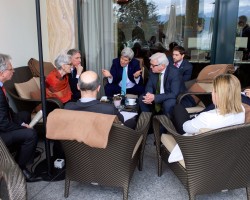
The Human Tinderbox in the Middle East | Sandy Berger, NSN Advisory Board Chair
The Human Tinderbox in the Middle East
Sandy Berger, NSN Advisory Board Chairman
June 10, 2015 | Foreign
Policy
The 25,000 civilians who fled the Iraqi city of Ramadi after its recent fall to the Islamic State represent only the latest wave of tragic human dislocation resulting from violence in the Middle East. Turmoil across the region has displaced more than 15 million people since 2011, leaving their return uncertain. Today, a staggering 78 million people worldwide, many uprooted, need assistance to meet basic food and shelter needs. This reflects a steady and unrelenting increase, up from approximately 30 million in 2006 and 65 million in 2012.
This situation is the human byproduct of political disintegration in conflict-torn countries across the Middle East and around the world, resulting from weakened state authority, the rise of brutal extremism, and conflicts based on power, religion, and ideology. The dislocation and desperation this chaos produces will only continue to grow, overtaking our collective institutional capacity to deal with it, while accelerating the vicious cycles of violence and disruption.
The humanitarian machinery established by the international community, largely after World War II, along with private relief groups, does courageous and remarkable work every day. But we simply do not have the resources and capacity to meet the world’s exploding needs. Both the United States and the international community need to rethink their approach to this burgeoning crisis and how, creatively and practically, to scale up global efforts to break the cycle of devastation.
To continue reading, click here.





